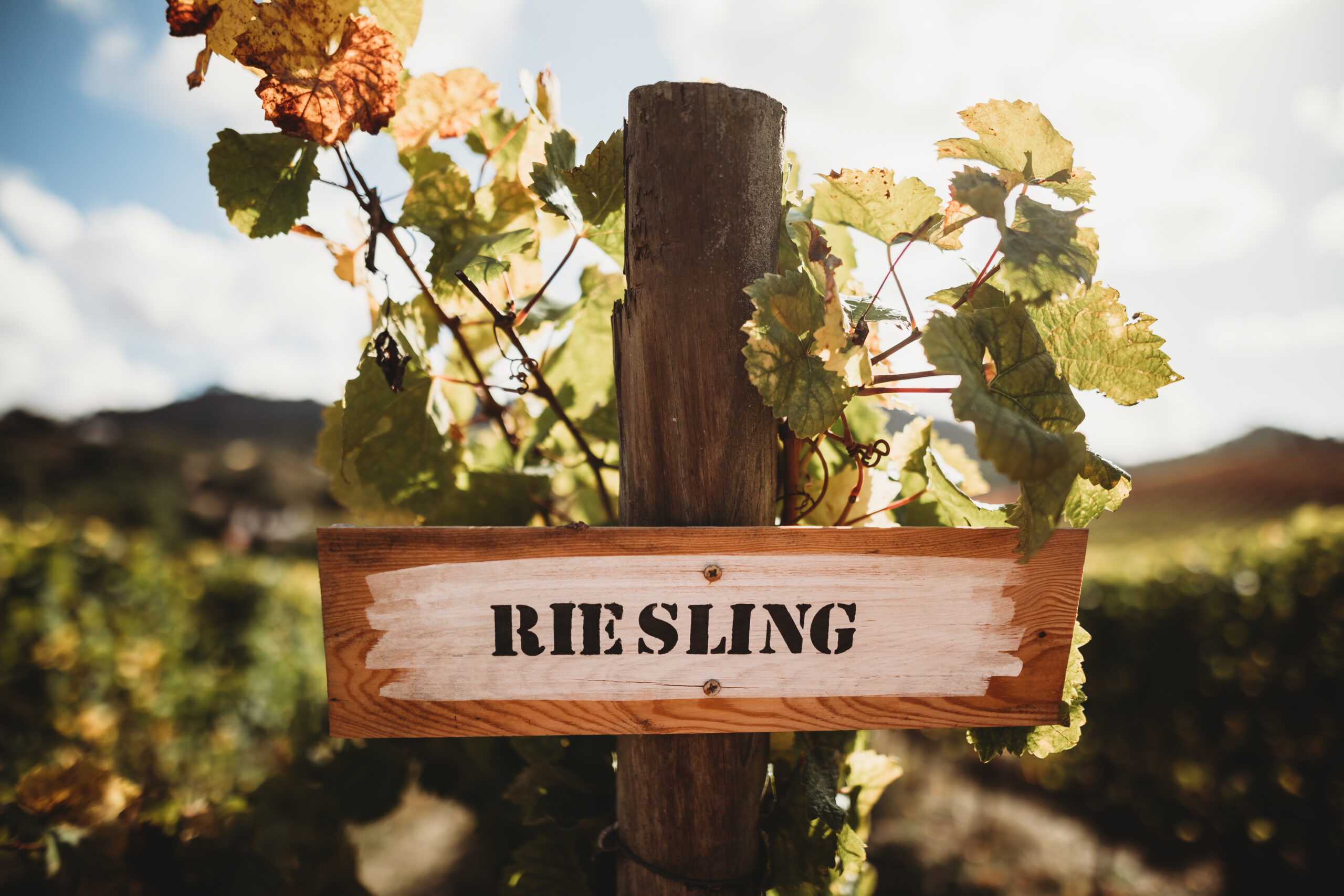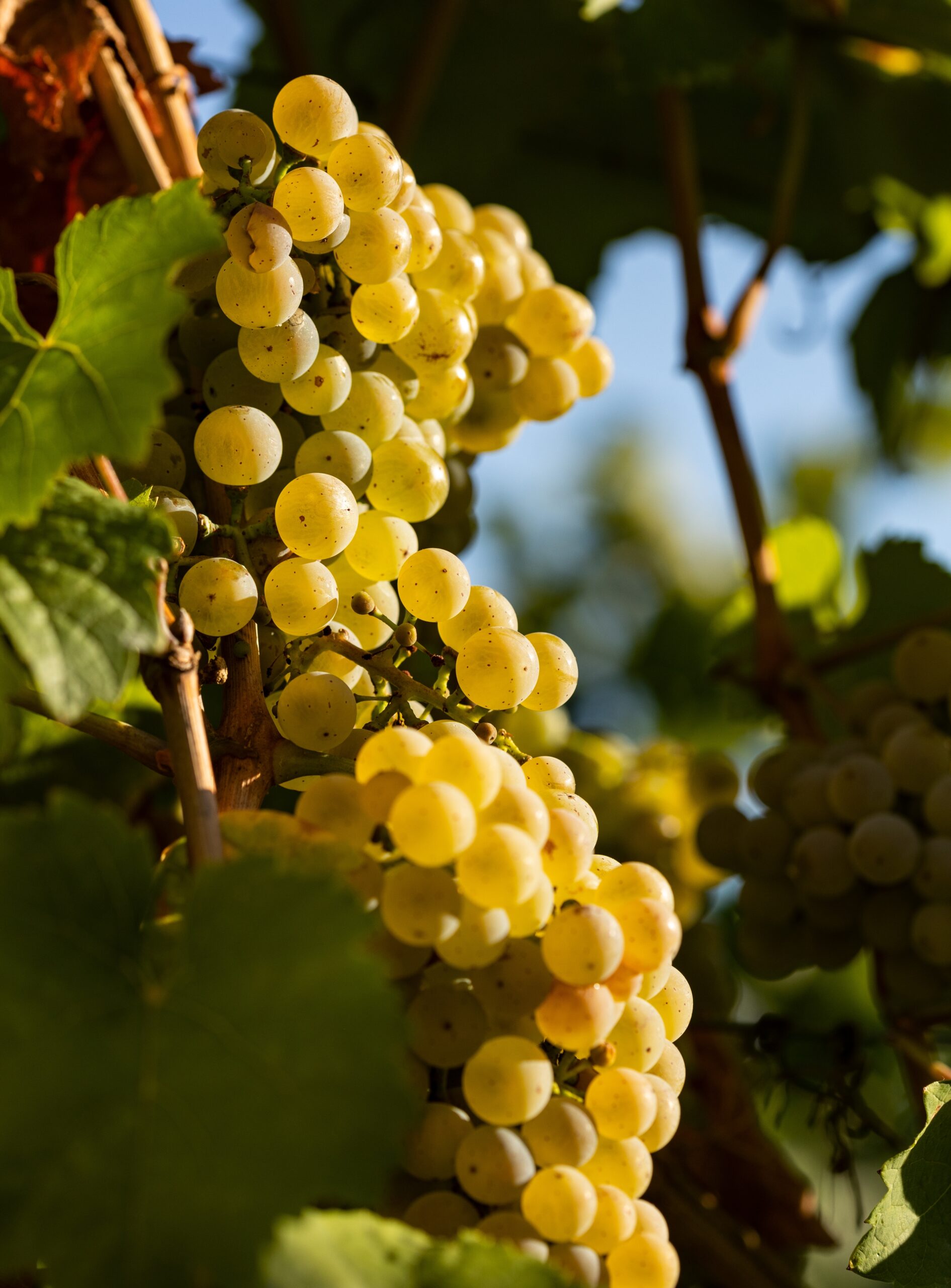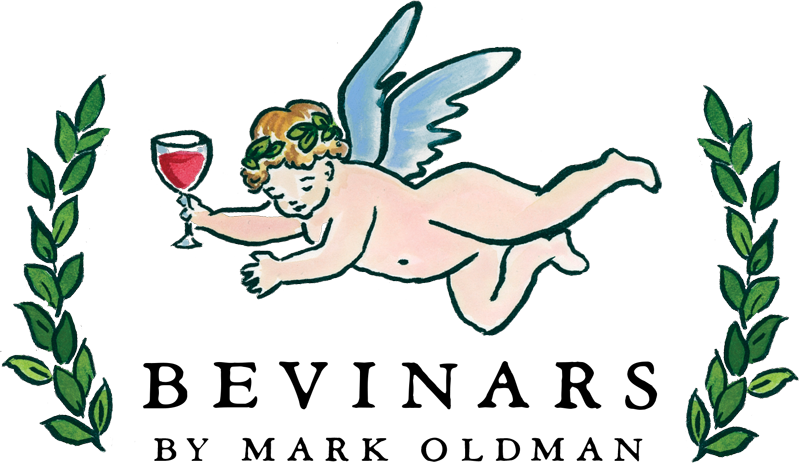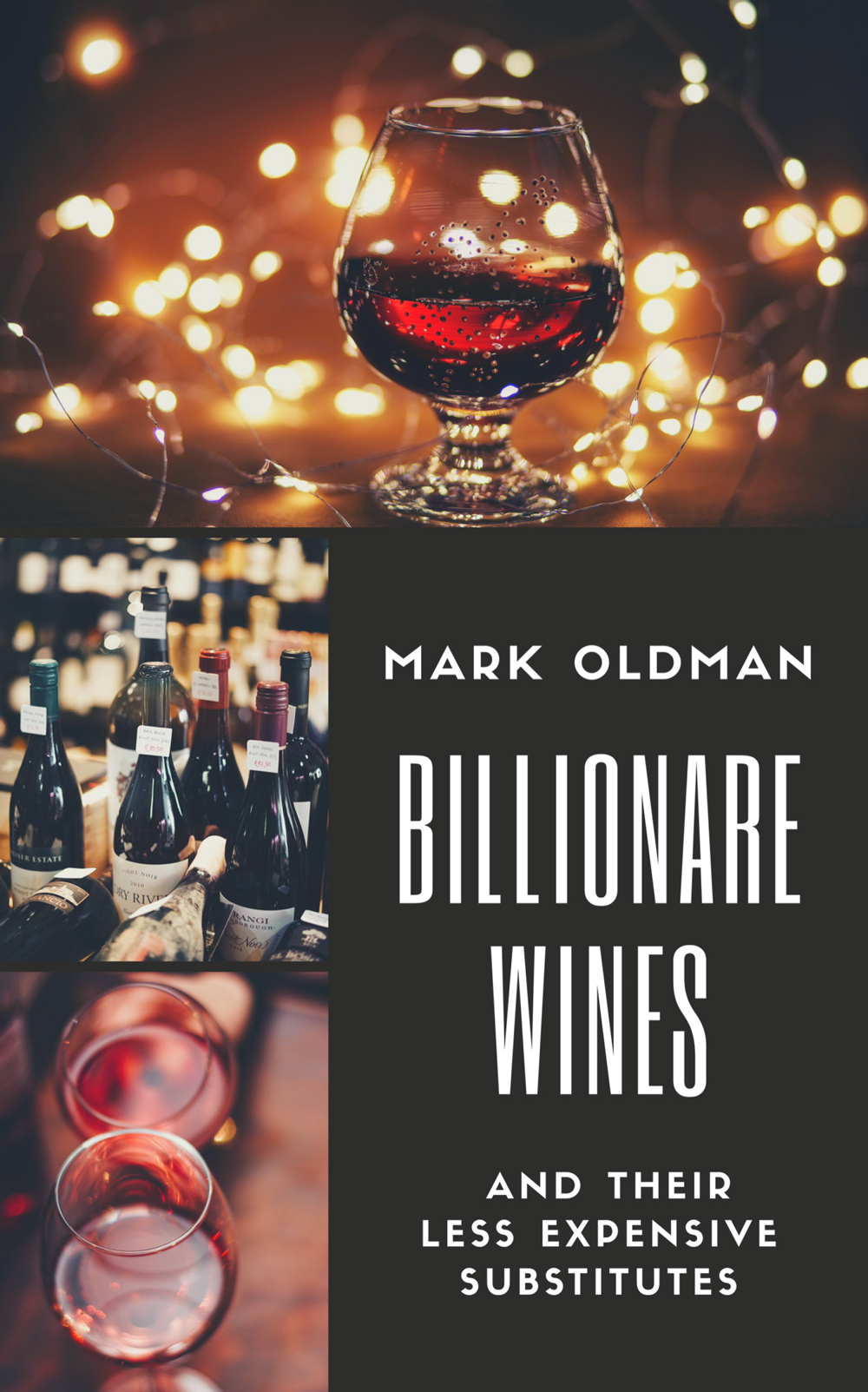Little-known Nuggets about Riesling Wine: Is Riesling Sweet?

Wine made from the Riesling grape, most often as a 100% varietal, tends to provoke strong reactions. Some love these wines, finding them chocked full of aromatic complexity, with the grape possible of extreme diversity in wine styles. Others disdain Rieslings, finding them overly quixotic and cloying, with a common complaint being their overpowering sweetness. This identity is seemingly confirmed by the nearly universal use of the tall, shoulder-less Alsace-style bottle to contain these wines.
Is Riesling, by definition or necessity, a sweet wine?
Resoundingly, no.
Winemakers producing the famous Riesling wines of New York’s Finger Lakes appellation, for example, often create dry styles and label them as such. The excellent wines of Hermann J. Wiemer Vineyard include numerous dry and semi-dry options, for instance. In Germany, too, labelling laws require an indication of the residual sugar level, and although perhaps the most famous options are sweet, many excellent dry Riesling wines exist as well.
Some Nuggets about Riesling Wine
• Part of the reason Riesling provokes strong reactions is that it is a distinctive and unique grape variety, characterized by its singular fruity and floral aromas. Unlike, for example, Chardonnay, Riesling has an incomparable range of aromas—it can’t be mistaken. Riesling counts among the aromatic grape varietals, such as Moscato and Torrontés. Moreover, it is one of the most popular grapes for the production of late harvest wines, which are, yes, sweet.
• It originated from the Rhine region, which runs through Germany, France, Austria, and Switzerland. History first records Riesling in the year 1435, a year marked the sale of a significant number of “Riesslingen” vines to a German count. These vineyards then spread to the Mosel Valley, creating a revolution that by the 1850s would elevate the variety to a highly coveted status, comparable to Bordeaux and Champagne wines. To this day, the best Rieslings in the world are produced in this region.

What are Riesling Wines Like?
• Fruity and floral aromas characterize this white variety the most. Peach, green or red apple, pear, grapefruit, as well as hints of jasmine, roses, lemon peel, ginger, honey, and a distinctive petrol aroma (especially in those wines with aging), are some of the notes that can be appreciated in a Riesling. In the mouth, its high acidity (similar to orange juice or lemonade), combined with its high potential to accumulate sugar, can offer extremely juicy wines with a sweet finish. However, as we have seen, depending on the soil, climate, and the winemaker’s intention, Riesling can be either a sweet or dry wine.
• Another characteristic is its aging ability. Some Rieslings can be stored for up to 30 years and evolve remarkably well, developing exquisite complexity. This adds to its favor among many wine connoisseurs. To truly appreciate Riesling’s marvelous complexity calls for detailed study, by taking a virtual wine class, for example.
Sweet or Dry?
• From the Riesling grape, both sweet and dry wines can be crafted. In the case of sweet wines, grapes usually come from colder regions like Germany, Alsace, and the Finger Lakes, where the winemaker leaves residual sugar to balance the grape’s marked acidity. The grape expresses terroir perfectly. In wines from Alsace, in northern France, where the temperature is warmer than in Germany, the wines are more alcoholic and mature. Although Rieslings from France and Austria have a drier profile, all these countries produce both styles of Riesling. Just reading the labels is often enough to know what type of wine you will discover. German wineries, for instance, commonly indicate sweetness: Trocken = bone dry; Halbtrocken = dry; Feinherb = off dry; Kabinett = slightly sweet; Kabinett Trocken = dry; Spätlese = fully sweet; Auslese = fully sweet, with honeyed notes. At the top, the wines marked Beerenauslese/Trockenbeerenauslese/Eiswein will be exuberant dessert wines. If the label doesn’t state the sweetness level, then look at the alcohol level. A useful guide is: 7.0-8.5% = sweet and likely fruity; 9-10.5% = off-dry; 11-14% = dry.
• Riesling is also cultivated in the New World well beyond New York State. This variety is produced in the cold climate of the Marlborough Valley in New Zealand and in the cooler valleys of Clare and Eden in southern Australia. In Chile, Riesling is also cultivated in the Rapel, Curicó, and Maule valleys. While it’s less common to find varietal wines of this type, it is indeed used quite a bit for the production of late harvest wines.
• This variety has thin skin, making it susceptible to botrytis, a noble rot that attacks overripe grapes, making them much sweeter and with a more complex aroma. This is why Riesling is one of the most popular grapes for making sweet wines. Botrytized must is often blended. For example, to add complexity and distinctive honey notes, Chile’s Concha y Toro Late Harvest 2017 and Concha y Toro Late Harvest Rosé 2019 include 10% Riesling from the Maule Valley in their blends.
A Perfect Wine for Food Pairing
• Thanks to Riesling’s complexity and great aging capacity, wine collectors often keep a variety of Rieslings on hand to serve with different types of foods. Why? Because Riesling wines are extremely versatile when it comes to food pairing. Rich acidity, low to high alcohol, and striking aromatics are the key factors to keep in mind when matching a particular Riesling with specific dishes. Always consult the label to know if your chosen Riesling is in a dry, semi-dry, sweet, or late-harvest style.
• Generally, Rieslings’ fresh acidity pairs very well with citrus-based dishes, with ingredients like lemon, lime, or lemongrass. The possibilities range from ceviche to salad, and it particularly complements the characteristic flavors of southeast Asian cuisine, like Thai and Vietnamese with a touch of spice (or maybe more than a touch). A sweet or semi-dry Riesling, for example, may compliment spicy hotness better than a higher-alcohol dry Riesling, but the fragrant aromas will always be there.
• When it comes to a dry Riesling, it’s best paired with fish or seafood dishes. A semi-dry Riesling is perfect for spiced or slightly sweet dishes like Indian or Thai curries, while it’s recommended to reserve a sweet Riesling for the dessert or cheese courses. Dry Riesling will stimulate the appetite, making for an super pre-dinner aperitif.
In the end, do not presume or pre-judge Riesling as a monochromatic, sweet wine. In fact, Riesling wines demonstrate a diversity rarely found in other wines. Give it a try, and to learn more, consider a wine class or perhaps a virtual event with friends!



